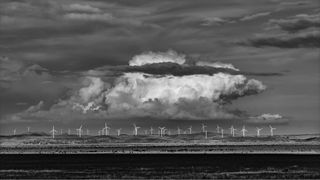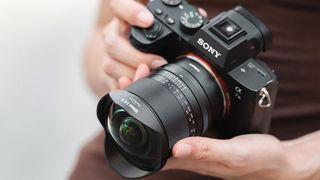We're here to help you find the best Nikon standard zoom lens, and get it at the best price. If you've bought a Nikon interchangeable lens camera – whether it's an F-mount DSLR or a Z-mount mirrorless – then you may have already picked up a kit lens that covers the standard zoom range. But could you be using something better?
The kind of lens you get with a new camera, like the AF-S DX 18-55mm f/3.5-5.6G ED VR II, has a lot going for it. These lenses tend to be light, compact, well-built and optically solid, delivering decent image quality and covering all your basic needs when you start taking photos. However, you may soon find yourself brushing up against a narrow maximum aperture, or wishing you had extra features like weatherproofing or optical image stabilisation. And that's when it's time to start shopping around.
Many of the better lenses covering a similar zoom range will have features like a constant maximum aperture of f/2.8, expanding your options in low light and enabling you to create a shallower depth of field in an image. Being able to create images with a blurred background and sharp foreground is critical in genres like portraiture, and is much more difficult with a limited kit lens. Being able to use these apertures at the tele end of the lens is also a bonus, as portrait subjects will look much better at 85mm than they will at 35mm.
All this does come at a cost, of course, and not just a financial one. Lenses with wider apertures will be bulkier and heavier than kit lenses, which can be an issue if you're a travel photographer, and can cause an unbalanced weight distribution if you're using a light mirrorless setup. As with many things, compromise is key, and it's best to do your research and figure out what suits you best.
We've picked standard zoom lenses from across Nikon's entire stable. We've divided them into three groups: those designed for Nikon's APS-C (DX) format DSLRs, those designed for full frame (FX format) Nikon DSLRs, and finally, lenses for Nikon Z-series mirrorless cameras (full frame and APS-C). You can use full frame standard zooms on a DX body, but the effective focal length becomes 1.5x longer.
So, let's get to the lenses!
Best Nikon standard zoom lenses in 2024
Why you can trust Digital Camera World
Nikon F DX
The best Nikon standard zooms for Nikon DX DSLRs, such as the Nikon D3500, Nikon D5600 or D7500.
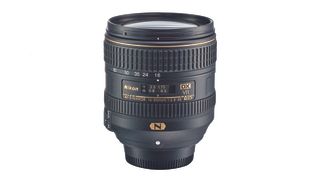
Specifications
Reasons to buy
Reasons to avoid
The perfect match for high-performance DX bodies like the D7500 and D500, this is the most advanced DX-format lens you can buy. Up-market features include an electromagnetically controlled diaphragm, ring-type ultrasonic autofocus and a weather-sealed mounting plate. It also has a big zoom range, going more wide-angle than other DX lenses and offering a long reach for a standard zoom. Typical ring-type ultrasonic attractions include fast and near-silent operation, with full-time manual override. The optical path includes four ED (Extra-low Dispersion) elements, Nano Crystal Coating for reducing ghosting and flare, plus fluorine coatings on the front and rear elements to repel muck and moisture. While build quality and handling are outstanding, performance admittedly leaves a bit to be desired in some areas.
Nikon AF-S DX 16-80mm f/2.8-4E ED VR full review
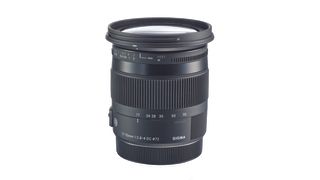
Specifications
Reasons to buy
Reasons to avoid
Part of the ‘Contemporary’ class models from Sigma’s ‘Global Vision’ line-up, this lens is designed to be compact, lightweight and stylish. It lacks a constant-aperture rating, but boasts a fast f/2.8 rating at the short end of the zoom range, while only shrinking to f/4 at the long end. That’s still an f/stop faster than most kit lenses. As with Sigma's 17-50mm lens, autofocus is based on an ultrasonic motor, and the focus ring rotates during autofocus, so you have to be careful to keep your fingers clear. You also get two FLD elements and a four-stop optical stabilizer. Centre-sharpness isn’t quite as good as from the Sigma 17-50mm, but levels of sharpness are much more consistent across the whole image frame.
Sigma 17-70mm f/2.8-4 DC Macro OS HSM | C full review
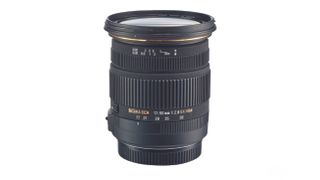
Specifications
Reasons to buy
Reasons to avoid
This lens has an ultrasonic motor-based autofocus system, which though not as fast as most ring-type ultrasonic systems and lacking in full-time manual override, the relatively small motor does enable a compact build. Even so, this is still a chunky lens and, at 565g, it's 100g heavier than Sigma's 17-70mm lens. It beats the 17-70mm in terms of having a constant-aperture f/2.8 rating, but falls shorter in maximum telephoto reach. It’s also an older design with an ‘EX’ designation, denoting ‘professional grade’ build quality, although the standard of construction doesn’t feel any more robust than that of the newer 17-70mm lens, and neither have any weather-seals. Helped by two FLD (Fluorite-grade Low Dispersion) elements, contrast and centre-sharpness are good throughout the zoom range.
Sigma 17-50mm f/2.8 EX DC OS HSM full review
Nikon F FX
The best Nikon standard zoom lenses for Nikon full-frame FX DSLRs, such as the Nikon D850 or Nikon D780.
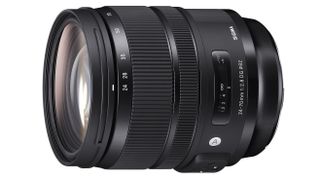
Specifications
Reasons to buy
Reasons to avoid
Sigma’s 24-70mm Art lens goes head to head with Nikon’s top-flight standard zoom for full-frame DSLRs. The headline specifications in terms of zoom range, aperture rating and optical stabilization are the same for both lenses, and they both deliver excellent image quality. They also both feature electromagnetically controlled diaphragms for aperture control. An additional bonus for the Sigma is that it’s compatible with an optional USB Dock for fine-tuning and customization, as well as for applying firmware updates. It’s also significantly shorter than the Nikon in physical length, although both lenses are similarly weighty at just over a kilogram. The Nikon lens is very marginally sharper but the Sigma produces less colour fringing and distortion at short focal lengths, and less vignetting at wide apertures. All in all, the Sigma is the better buy.
Sigma 24-70mm f/2.8 DG OS HSM | A full review
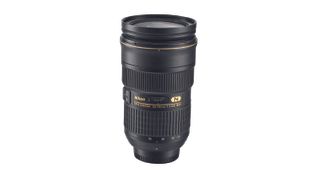
Specifications
Reasons to buy
Reasons to avoid
This ‘f/2.8E’ edition of Nikon's original 24-70mm f/2.8G lens is a major revamp. It has an all-new optical layout, even tougher build, and the added attraction of VR, rated at four stops. There are four ED elements in total, plus an HRI (High Refractive Index) element, Nano Crystal Coatings, fluorine coatings on the front and rear elements, and best of all, an electromagnetically controlled diaphragm. As such, the lens features a host of Nikon’s latest technical innovations, along with quick and whisper-quiet ring-type ultrasonic autofocus. The electromagnetically controlled diaphragm enables very consistent exposures in rapid-fire continuous shooting. Sharpness and contrast are both excellent, and there’s particularly good resistance to ghosting and flare. However, vignetting is pronounced at wide apertures, and color fringing and distortion can be noticeable.
Nikon AF-S 24-70mm f/2.8E ED VR full review
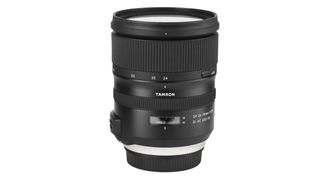
Specifications
Reasons to buy
Reasons to avoid
The combination of a 24-70mm zoom range with a fast f/2.8 constant aperture is a favourite of many creative photographers. This Tamron lens stole a lead on its competitors by adding optical stabilization into the mix. The Tamron looks and feels like a truly professional-grade lens. It’s not only robust, but it was Tamron’s first lens to boast weather seals. Posh glass includes three LD (Low Dispersion) and two XR (Extra Refractive index) elements. The Tamron comes pretty close to the much more expensive Nikon 24-70mm f/2.8 lens for centre-sharpness throughout most of the zoom range. However, it drops off a little more at the long end, and is somewhat softer towards the corners of the frame at all zoom settings. Autofocus is rapid and whisper-quiet.
Tamron SP 24-70mm f/2.8 Di VC USD G2 full review
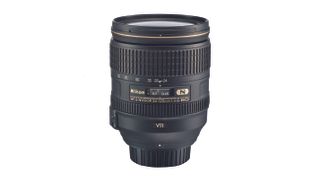
Specifications
Reasons to buy
Reasons to avoid
An upgrade of Nikon’s original 24-120mm VR lens, this has a more effective, new-generation optical stabilizer (rated at up to four stops), and a constant f/4 aperture, instead of it shrinking from f/3.5 to f/5.6 through the zoom range. Like the other Nikon lenses on test, it feels reassuringly well built and features a rubber weather-seal ring on the mounting plate. Handling is excellent, with smooth operation of the zoom and focus rings. Optical highlights include two ED elements and Nano Crystal Coating. The autofocus and Mk II VR systems work well, but the Nikon loses out to the competing Sigma 24-105mm for centre-sharpness, especially in the longer half of the zoom range. The flip side is that the drop-off in corner-sharpness is less noticeable. Overall image quality is very satisfying.
Nikon AF-S 24-120mm f/4G ED VR full review
Nikon Z
The best Nikon standard zoom lenses for Nikon Z mount mirrorless cameras, such as the Nikon Z 50, Z 6 and Z 7.
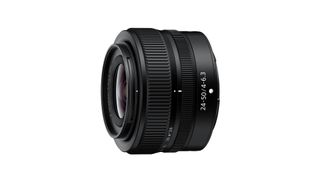
Specifications
Reasons to buy
Reasons to avoid
To an extent, making a good lens is all about trade-offs. Making a full-frame lens that's as amazingly light and compact as the Nikkor Z 24-50mm f/4-6.3 is going to incur some drawbacks in other areas, namely in zoom range and maximum aperture. So, while the Nikkor Z 24-50mm f/4-6.3 makes for an amazingly light travel lens, its 2x zoom range is more constricted than others on this list, and the maximum aperture of f/4-6.3 is going to reduce your options in low light.
It's an optically solid lens, available at a good price, though whether you need what it's selling is really up to you. If you can see a use for a lens with these vital statistics, then the Nikkor Z 24-50mm f/4-6.3 will not let you down. However, many photographers may find themselves chafing against its limitations.
Read more: Nikkor Z 24-50mm f/4-6.3 review
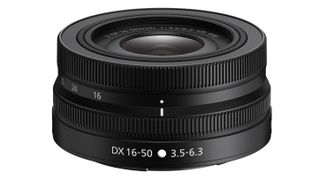
Specifications
Reasons to buy
Reasons to avoid
Developed for the APS-C format Z 50 mirrorless camera, this lens is suitably compact and lightweight, weighing in at just 135g. It has a retractable design, enabling it to shrink down to just 32mm in length for stowage, so it’s eminently travel-friendly. One of the weight-saving measures is that the lens has a plastic rather than metal mounting plate, and there are no weather-seals, but build quality feels pretty solid overall. Given that the aperture rating narrows to a ‘slow’ f/6.3 at the long end of the zoom range, and that the Z 50 has no in-body stabilization, the 4.5-stop optical VR is a very welcome inclusion. This little lens punches above its weight for image quality, with impressive sharpness throughout the entire zoom range, even when shooting wide-open.
Nikon Z DX 16-50mm f/3.5-6.3 VR full review
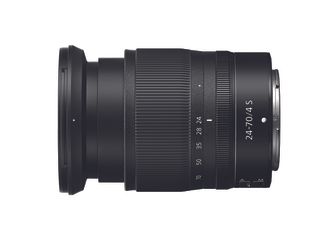
Specifications
Reasons to buy
Reasons to avoid
Tying in perfectly with the slim, lightweight design ethos of Z 6 and Z 7 cameras, this standard zoom tips the scales at 500g and is nice and small for stowing away, thanks to its retractable design. It certainly doesn’t come up short in terms of image quality, with fabulous sharpness across the entire image frame, throughout the whole zoom range. Naturally, the widest aperture of f/4 doesn’t deliver such a tight depth of field as from the more up-market Z 24-70mm f/2.8 lens, but defocused areas in scenes look pleasantly soft. Indeed, you can focus right down to 0.3m, enabling a 0.3x magnification factor and plenty of background blur. Onboard controls are fairly rudimentary but you can alter the action of the manual focus ring for other functions, like stepless aperture control during movie capture.
Nikon Z 24-70mm f/4 S full review
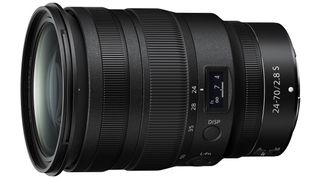
Specifications
Reasons to buy
Reasons to avoid
If you don’t mind going large in build and price, this top-flight standard zoom is a significant upgrade over the already excellent Nikon Z 24-70mm f/4 S. It’s an f/stop faster, enabling quicker shutter speeds without bumping up your camera’s ISO setting, and a tighter depth of field for more effectively isolating the main subject in a scene. Additional features include a separate customisable control ring, whereas the f/4 lens relies on changing the action of the manual focus ring for this purpose. The f/2.8 lens also gains a customisable Lens Function button and a multi-mode info display, similar to that of the Z 70-200mm f/2.8 lens. Image quality is stunning in all respects.
Nikon Z 24-70mm f/2.8 S full review
How we test lenses
We test lenses using both real world sample images and lab tests. Our lab tests are carried out scientifically in controlled conditions using the Imatest testing suite, which consists of custom charts and analysis software that measures resolution in line widths/picture height, a measurement widely used in lens and camera testing. We find the combination of lab and real-word testing works best, as each reveals different qualities and characteristics.
More Nikon lens buying guides
The best Nikon lenses
The best standard zoom lenses
Best portrait lenses for Nikon users
Best superzoom lenses for Nikon users
Best wide-angle lenses for Nikon
The best 150-600mm lenses
The best 100-400mm lenses
The best 50mm lenses
The best 70-200mm lenses
The best budget telephoto lenses
The best macro lenses
The best fisheye lenses
Nikon Z lens roadmap



